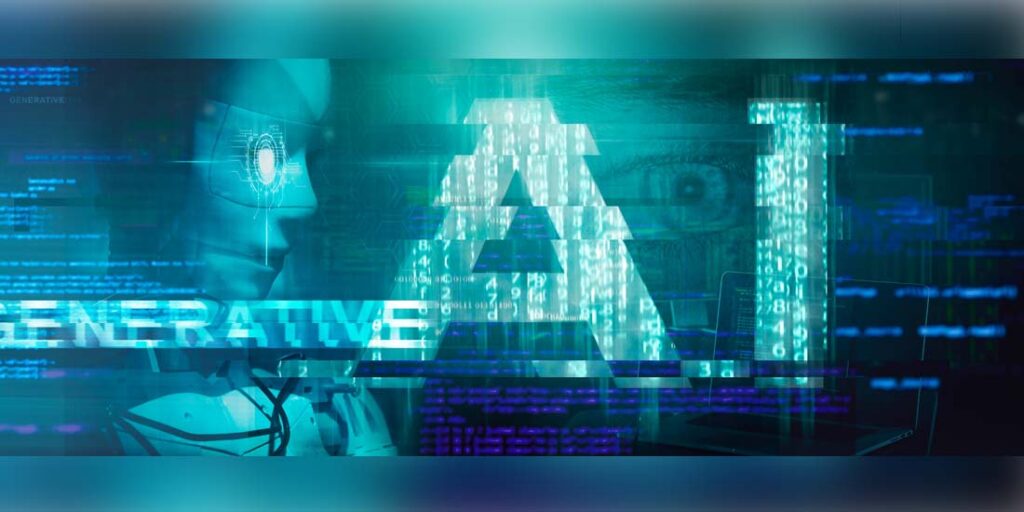Intellectual property (IP) protection is a difficult area to navigate in the age of generative AI (GenAI). For example, say your software developers use GenAI for coding assistance to write a new application or you hire an artist who uses AI to generate art for a digital marketing campaign, but they dedicate significant time to refining the vision and prompt. Do these types of work products benefit from IP protection?
The answer is: it depends.
IP is an intangible creation of the human intellect. Protection for IP owners is important, because it allows creators and organizations to benefit from their investment in creativity and innovation. Copyrights, patents, and other forms of IP protection give exclusive rights to your organization, which allows you to control revenue generation, sets you apart from the competition, and prevents them from plagiarizing your work.
The problem is, for GenAI-authored content, it’s impossible to know precisely how to do this at the moment as the courts are lagging behind the technology. In this piece, we’ll look at the law as it stands today, ways to protect GenAI work from an IP perspective, and what work you should avoid using GenAI on in the first place.
Copyrights and Patents
IP laws were written well before the emergence of GenAI. In the US, the verdicts in federal courts over the past few years (e.g. Thaler v. Perlmutter and Thaler v. Vidal) seem to say that only human creators can benefit from copyrights or patents.
As we sit today, the Copyright Act requires human authorship and does not protect output from new forms of technology operating absent human involvement. The most favorable case for GenAI involved a comic book artist (Thaler) who was able to keep copyright protection for his comic book narrative, but not the images that were generated by AI.
In the US, it’s even more obvious that the Patent Act requires inventors to be humans. Of course, this doesn’t preclude courts from making a determination that sufficient human creativity or input does give rise to ownership, based on the specific facts of a future case. Does a piece of software that is 50/50 written by a human and GenAI meet the criteria give rise to copyright?
The answer is that we simply have no certainty on the threshold of human involvement right now. It’s wise to not lean heavily on GenAI for anything you absolutely must protect with a copyright or patent. Using something like Copilot to assist with routine coding tasks is likely fine, whereas more artistic uses of GenAI are a lot more nebulous.
Different International Perspectives
There is also a lack of harmonization of IP laws internationally. While countries have generally rejected patent applications when human creators have not been identified, South Africa has allowed an AI system to obtain patent protection, due to the lack of a formal definition of “inventor” under its patent regime.
Copyright protection has been less consistent among countries, both historically and recently. In a landmark case—and in contrast to US courts—the Beijing Internet Court ruled in November 2023 that a piece of text-to-image AI-generated artwork posted to Xiaohongshu, one of the most popular Chinese social media platforms, can benefit from copyright protection. The plaintiff in this case adjusted the prompts and parameters enough to persuade the court that the images reflected his human creativity and intellectual input.
According to the World Intellectual Property Organization (WIPO), South Africa, India, New Zealand, and the United Kingdom provide copyright protection for computer generated works without human authors, although protection might be narrower than human authored works. Ukraine has introduced certain economic rights for non-original objects generated by computer programs, such as non-original databases.
Which is to say: it appears that there is a growing international appetite to protect GenAI work products but there isn’t yet a rubric we can apply broadly.
However, there is one thing that can help you protect your IP better than copyright or patents:
Trade Secrets and Contractual Protection
A “trade secret” is confidential information that has economic value based on the fact it is not generally known or readily ascertainable. It’s also more compatible with GenAI outputs and can encourage organizations and their creators to more freely leverage the benefits of GenAI.
To be afforded trade secret protection, organizations are required to demonstrate that they’ve tried to safeguard the relevant process or output. While it might not be useful for artwork that is publicly displayed, trade secret protection should arguably apply to AI-assisted code, just as it has always applied to code written by humans if developed in private and safeguarded. Note that the inputs used to train GenAI may still be the subject of IP infringement issues, but that would be the topic of another article.
Companies can commercially license GenAI assisted code as a trade secret, and, at the same time, build more protection into the license agreement itself, which can be in the form of a signed contract or even a clickthrough for publicly available cloud solutions. The ability to use license agreements to clearly lay out the responsibilities and allocation of risk for the company and end user is incredibly powerful.
Takeaways for Organizations
While courts and bright legal minds around the world are starting to address intellectual property protection in relation to GenAI, we’re still quite early in the process.
Still, the current state of copyright and patent laws in the US does not provide much protection for AI-generated work products. Organizations should be thoughtful about how to engage with GenAI, and communicate clear policies to its employees and contractors.
There are still three smart things you can do to protect your GenAI work product. First off, you should consider using GenAI only where IP rights are non-essential. That will significantly reduce risk to your organization while the courts start settling these issues more concretely. Secondly, you should document the role of humans in the invention or creation process. And, thirdly, leverage trade secret protection and license agreements wherever you can. This can help establish your GenAI outputs as protected intellectual property in ways that copyrights and patents simply can’t today.
No information contained in this blog post should be construed as legal advice from Weights & Biases or the individual author, nor is it intended to be a substitute for legal counsel on any subject matter.
About the Author

Alexis Liu is the Head of Legal at Weights & Biases, the leading AI developer platform with tools for training models, fine-tuning, and leveraging foundation models. Alexis has led legal teams in the high-growth tech space and advised executives on AI policy, SaaS, licensing, product counseling, IP, data privacy, and corporate matters. Prior to that, Alexis was an M&A attorney at the global law firm, Sidley Austin LLP. Alexis Liu earned a Bachelor of Arts degree from Wellesley College and a JD from University of Pennsylvania Carey Law School.
Sign up for the free insideAI News newsletter.
Join us on Twitter: https://twitter.com/InsideBigData1
Join us on LinkedIn: https://www.linkedin.com/company/insidebigdata/
Join us on Facebook: https://www.facebook.com/insideAI NewsNOW





Speak Your Mind